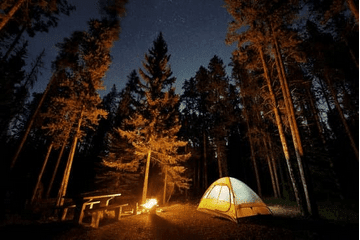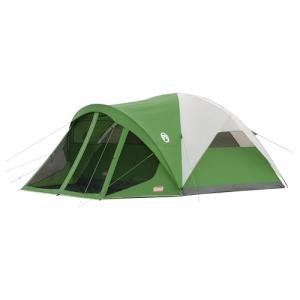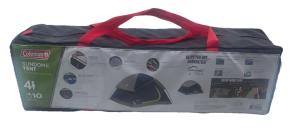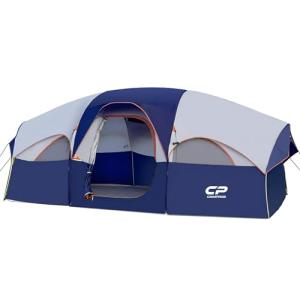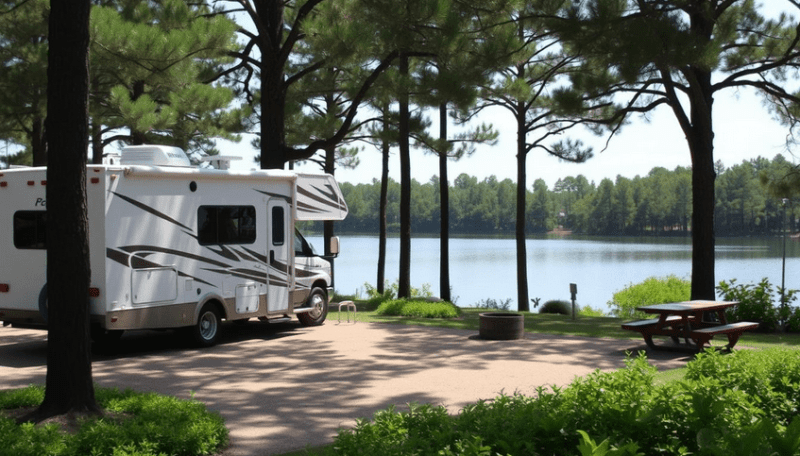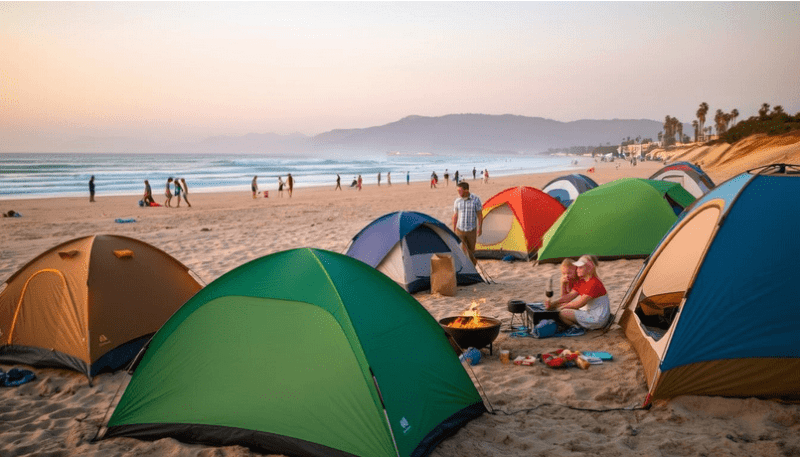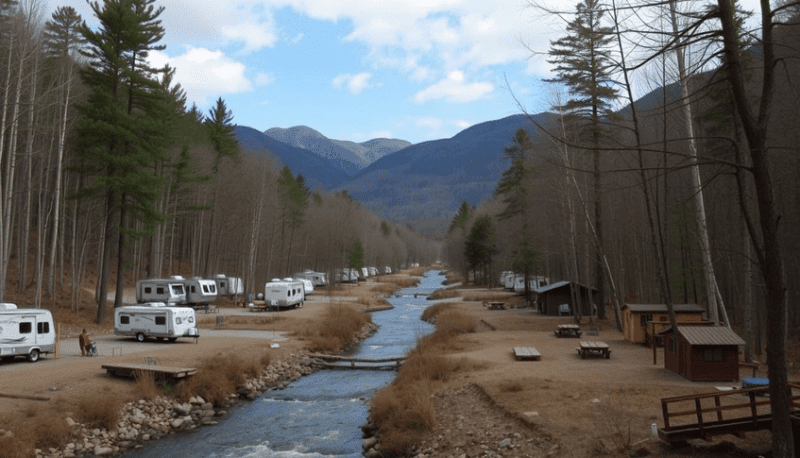Everyone remembers their first camping trip, filled with excitement and maybe a few nerves. To make the experience enjoyable and stress-free, beginners need a solid plan and the right gear. Whether exploring the woods or setting up a tent in a local campground, preparation is key for new campers.

Camping is not just about being outdoors; it’s about making memories and learning skills along the way. Many first-time campers wonder where to start. From selecting the right campsite to packing essential items, this guide will cover all the important aspects for beginner campers, ensuring they feel confident and ready to explore.
No one wants their first camping experience to be overwhelming. With the right tips and insights, new campers can focus on having fun and fully enjoying nature. Understanding what to expect on the trip will help create a memorable adventure in the great outdoors.
Key Takeaways
- The right preparations can ease first-time camping nerves.
- Essential gear makes the camping experience more enjoyable.
- Knowing campsite management tips enhances the overall trip.
Choosing the Right Camping Type

Selecting the right type of camping can greatly enhance the first camping experience. Each style offers unique benefits and challenges, making it important for beginners to understand their options.
Understanding Different Camping Styles
Camping comes in various styles, each suited to different preferences and skill levels. Some popular types include:
- Car Camping: Staying at campgrounds accessible by car.
- Tent Camping: Setting up a tent in designated camping areas.
- Backpacking: Hiking to remote locations and camping with minimal gear.
- RV Camping: Using a recreational vehicle for comfort and mobility.
- Dispersed Camping: Campers set up away from formal campgrounds, typically in national forests.
Choosing the right style helps ensure a fulfilling and enjoyable trip.
Car Camping Essentials
Car camping is ideal for beginners because it offers convenience. Campers can bring extra gear and supplies since they drive to their campsite. Key essentials include:
- Tent: Choose a spacious and easy-to-set-up option.
- Sleeping Gear: Bring sleeping bags and pads for comfort.
- Cooking Supplies: A portable stove, utensils, and cooler are important.
- Safety Kit: Pack a first aid kit, flashlight, and fire extinguisher.
Campgrounds often provide facilities like restrooms and picnic tables, which can enhance the experience.
Adventures in Tent Camping
Tent camping allows for a more immersive experience in nature. Campers set up tents in campgrounds, state parks, or national parks. Important points to consider include:
- Selecting a Campsite: Look for flat ground away from hazards.
- Weather Preparedness: Choose a tent suited for varying weather conditions.
- Campfire Regulations: Be aware of campfire rules and firewood usage.
Tent camping can be a rewarding way to connect with nature, given the right preparation.
The Thrill of Backpacking
Backpacking is a great way to explore more remote areas, allowing campers to reach beautiful, less-traveled spots. It involves carrying all supplies on one's back. Key points to remember include:
- Gear Selection: Lightweight gear is essential for comfort and mobility.
- Route Planning: Choose trails suitable for beginners and have a map on hand.
- Leave No Trace: Respect nature by following proper disposal and camping practices.
Backpacking can bring a sense of adventure and independence.
RV Camping Advantages
RV camping offers a blend of comfort and adventure. It allows campers to travel with many home comforts. Advantages include:
- Comfortable Accommodations: RVs come with beds, kitchens, and bathrooms.
- Mobility: Campers can move between various locations easily.
- Social Opportunities: RV parks often foster community and group activities.
This style works well for families and those who want to explore while still enjoying comforts.
Discovering Dispersed Camping
Dispersed camping is a more rustic option, typically allowed in national forests. Campers set up outside designated campgrounds. Important aspects include:
- Location Choice: Look for established sites or areas that have been used before.
- Regulatory Awareness: Know the rules about camping in certain areas.
- Self-sufficiency: Prepare for a lack of amenities like water and restrooms.
Dispersed camping lets one experience solitude and serenity in nature.
Essential Camping Gear and Equipment
Being prepared with the right camping gear makes a significant difference in a beginner's experience. Each piece of equipment plays a vital role in comfort, safety, and enjoyment during a camping trip.
Selecting a Suitable Tent
Choosing the right tent is crucial for any camping trip. Beginners should look for a tent that is easy to set up and large enough to accommodate everyone comfortably. A good rule of thumb is to select a tent with a capacity rating higher than the number of people using it.
Features to Consider:
- Waterproofing: Check the tent's rain fly and floor materials.
- Ventilation: Look for tents with multiple mesh windows for airflow.
- Season Rating: Three-season tents are typically suitable for most beginners.
A tent with a vestibule is also advantageous for storing gear outside the sleeping area.
Comfort with the Right Sleeping Bag
A quality sleeping bag is key to a good night's sleep outdoors. When choosing, consider the temperature rating, which tells you the lowest temperature the bag can handle.
Important Features:
- Insulation Type: Synthetic bags are easier to care for, while down bags offer better insulation-to-weight ratios.
- Shape: Mummy-shaped bags keep heat in better, while rectangular bags provide more space.
A sleeping bag liner can enhance warmth and make the bag easier to clean.
Importance of Sleeping Pads
Sleeping pads add an extra layer of comfort and insulation from the cold ground. They can significantly improve sleep quality.
Types of Sleeping Pads:
- Air Pads: Lightweight and compact, offering good insulation.
- Self-Inflating Pads: Combo of foam and air for comfort and ease.
- Closed-Cell Foam Pads: Durable and inexpensive, but less comfortable.
Inflatable pads are generally preferred for comfort, while foam options can be better for rugged terrain.
Camp Kitchen Must-Haves
Cooking outdoors requires specific gear to make meal prep easy and enjoyable. A camp stove is essential for heating meals quickly.
Basic Cooking Equipment:
- Camping Stove: Look for one that uses propane or butane canisters.
- Cookware: A lightweight set including pots, pans, and utensils will suffice.
- Cooler: Keeping food fresh extends the variety of meals. Choose a size based on the length of the trip.
Additional items like a cutting board and a multi-tool can make cooking easier and more efficient.
Camping Furniture for Comfort
Comfortable seating and furniture can enhance the camping experience. Camp chairs and tables provide a space to relax and eat.
Suggested Items:
- Camping Chairs: Lightweight, foldable chairs are great for sitting around the fire.
- Portable Tables: Offer a stable surface for prepping food and playing games.
A hammock can also be a great addition for relaxing, providing a cozy spot to enjoy the surroundings. Choose one that is easy to set up and pack.
Preparation and Packing List

Preparing for a first camping trip is crucial to ensure a smooth experience. A well-thought-out packing list and smart choices in gear can help make the adventure enjoyable and safe. Below are essential steps for organizing everything needed for the trip.
Creating a Comprehensive Checklist
A detailed checklist is key for a successful camping experience. This should cover essential camping gear like a tent, sleeping bag, and cooking supplies.
Consider including:
- Tent and footprint
- Sleeping gear: sleeping bag, sleeping pad
- Cooking utensils: stove, pots, cutlery
- Food and water: snacks, portable water filter
- First aid kit: band-aids, antiseptic wipes, pain relievers
Check off items as they are packed. This helps avoid forgetting important gear. A well-prepared person can focus more on enjoying nature instead of worrying about missing items.
Clothing and Footwear Selection
Choosing the right clothing is important for comfort and safety. Layering is recommended. Start with a moisture-wicking base layer, add an insulating middle layer, and finish with a waterproof outer layer.
Footwear is just as important. Hiking boots provide support and protect the feet, while hiking shoes offer comfort for lighter trails. Include:
- Socks: moisture-wicking and extra pairs
- Sun protection: wide-brimmed hat, sunglasses
- Cold weather gear: gloves, scarf, warm hat
Remember, versatility in clothing choices can adapt to changing weather conditions.
Safety and Navigation Tools
Safety is a top priority in camping. Bring tools to navigate and respond to emergencies. A headlamp is crucial for hands-free lighting at night. It helps set up camp after dark or find path markers.
Include:
- Map and compass: vital for navigating trails
- Multi-tool or knife: handy for many tasks
- First aid kit: includes necessary supplies for minor injuries
It's important to periodically inspect gear to ensure everything works properly. Being prepared can enhance a camper's peace of mind.
Campsite Setup and Management

Setting up a campsite properly is key to a successful camping experience. Choosing the right spot, building a safe campfire, and maintaining a clean area are all crucial aspects that impact the overall enjoyment of the outdoor adventure.
Selecting the Right Spot
The first step in setting up a campsite is selecting an appropriate location. Look for level ground that is dry and free from rocks or debris. Avoid low areas where water may collect if it rains.
Consider these factors:
- Distance: Stay at least 200 feet away from lakes or rivers to protect the water source and ensure safety.
- Shade: Find natural shade to keep the campsite cool during the day, but avoid areas where falling branches could be dangerous.
- Wind Direction: Position the tent away from prevailing winds to help retain warmth and reduce noise.
Campfire Building and Safety
A campfire can enhance the camping experience, but it requires caution. Build the fire in designated rings or clear, flat areas, away from tents and flammable materials.
Fire safety tips:
- Gather wood: Use dead branches and avoid cutting live trees. Collect enough wood before nightfall.
- Start small: Use kindling and small sticks before adding larger logs. This ensures the fire ignites easily.
- Extinguish properly: When finished, pour water on the fire and stir the ashes until cool. Always leave the site as it was found.
Maintaining a Clean Campsite
Keeping a campsite clean is vital to protect wildlife and the environment. Dispose of trash properly by using trash bags and designated disposal areas at campgrounds.
Helpful practices:
- Food Storage: Store food in bear-proof containers or hang it from trees at least 10 feet off the ground to prevent attracting animals.
- Leave No Trace: Follow the Leave No Trace principles. Minimize campfire impact, respect wildlife, and leave natural and cultural features undisturbed.
- Regular Checks: Conduct regular checks around the campsite to ensure it remains tidy throughout the stay.
By focusing on these key areas, campers can create a safe and enjoyable outdoor experience.
Activities and Making the Most of Your Trip

Planning activities can greatly enhance the camping experience. Engaging in outdoor adventures, connecting with friends, or enjoying peaceful solo time can make a camping trip memorable.
Hiking and Exploring Nature
Hiking is one of the best ways to connect with nature during a camping trip. It allows campers to explore the surrounding landscape and enjoy scenic views.
Tips for Hiking:
- Choose Trails Wisely: Select trails suitable for beginners to avoid overwhelming experiences.
- Pack Essentials: Bring plenty of water, snacks, and a first-aid kit to ensure safety.
- Observe Wildlife: Keep an eye out for local wildlife. This adds excitement to each hike.
Setting off early in the morning can also provide a peaceful atmosphere. Sunrise hikes offer stunning views and a fresh start to the day.
Social Experiences and Camping with Friends
Camping with friends can turn a weekend getaway into a fun social experience. It encourages teamwork and creates lasting memories.
Group Activities to Enjoy:
- Campfire Stories: Gather around a campfire to share stories or roast marshmallows.
- Outdoor Games: Bring along games like frisbee or cards for added fun.
- Group Hikes: Organize hikes to explore local trails together.
Planning activities can help strengthen friendships. Everyone can contribute by bringing items or organizing group meals. This collaborative effort adds to the enjoyment of camping.
Enjoying Peaceful Solo Activities
For those who prefer solitude, camping offers the perfect environment for reflection and peace. Solo activities can be fulfilling during a trip.
Solo Activities to Consider:
- Reading: Bring a book to enjoy while surrounded by nature’s sounds.
- Photography: Capture the beauty of the outdoors. This can be a great way to document the journey.
- Meditation or Yoga: Engage in mindfulness exercises to rest the mind and connect with nature.
These peaceful moments allow an individual to recharge. They provide a contrast to the social aspects of camping. Taking time for oneself adds depth to the camping experience.
Adapting to Different Seasons and Weather

Camping experiences differ greatly depending on the season and weather conditions. Each season offers unique challenges and benefits. Knowing how to adapt can enhance the enjoyment of a camping trip and ensure safety.
Summer Camping Guide
Summer camping is popular but can come with heat challenges. Staying cool is essential. Campers should choose tents with good ventilation. Placing tents in shaded areas can help reduce heat.
Water is crucial in hot weather. Campers should drink plenty of fluids and keep water accessible. It's also smart to plan activities for cooler parts of the day, like early morning or evening.
Additionally, bug spray is important during summer. Insects can be a nuisance. Using repellents and wearing long sleeves can help keep them at bay. Being prepared makes summer camping more enjoyable.
Embracing Winter Camping
Winter camping allows for a different kind of adventure. Camping in the snow requires special gear. A four-season tent is recommended as it’s built to handle harsh weather.
Dressing in layers is crucial for warmth. Materials that wick moisture away from the skin should be the first layer. Insulated outer layers provide protection from wind and cold.
Campers should also consider safety measures. Carrying a portable stove can help with cooking and boiling water. Always check weather conditions before setting out to ensure safety during winter trips.
Camping in Transitional Seasons
Spring and fall can be unpredictable. Weather can change quickly, so flexibility is key. Campers should pack for varying conditions, including rain and chilly nights.
During spring, flowers bloom and wildlife is active. This makes for beautiful surroundings but also brings rain. Waterproof gear is important to stay dry.
In fall, the weather often cools down. Campers should have enough warm clothing. Choosing campsites with wind protection is also wise. Layers help adjust to changing temperatures throughout the day.
Preparing for these transitional seasons can lead to rewarding experiences in nature.
Frequently Asked Questions
Many beginners have important questions before their first camping trip. Getting the right gear, ensuring safety, and knowing how to set up a tent are common concerns. This section answers key questions to help make the camping experience smoother.
What equipment is essential for a beginner's camping trip?
Essential gear for a beginner includes a tent, sleeping bag, and sleeping pad. A camp stove or portable grill is crucial for cooking meals. A cooler keeps food fresh, while a first-aid kit ensures health and safety.
How can I ensure safety during my first camping experience?
To ensure safety, choose a well-marked and populated campground. Always inform someone about your plans and expected return. Familiarize yourself with local wildlife and weather conditions, and carry a flashlight with extra batteries.
What are the best practices for setting up a tent for the first time?
When setting up a tent, select a flat, dry area away from trees. Lay out the tent and stake it down securely. Adjust the rainfly if needed to protect against moisture, and ensure that all zippers and openings are secured.
Can you suggest a checklist of items for a beginner camper?
A beginner camper’s checklist should include:
- Tent and footprint
- Sleeping bag and pad
- Cooking equipment (stove, pots)
- Utensils and plates
- Food and snacks
- First-aid kit
- Flashlight and extra batteries
What are some common beginner mistakes to avoid while camping?
Common mistakes include overpacking or underpacking gear. Failing to check the weather can lead to discomfort. Additionally, not reviewing campsite rules and guidelines can result in fines or unsafe situations.
How should a family with children prepare for their first camping trip?
Families with children should involve kids in the planning process to build excitement. Choose a family-friendly campground with amenities. Pack extra snacks and fun activities to keep children entertained during downtime.
DISCLAIMER
This document is provided for general information purposes only and should not be relied upon as providing legal advice, technical, or specific operational guidance to the reader, whether as to the practices described in the document or the applicable legal requirements and regulations. bestcampingdeals.com expressly disclaims any responsibility for liability arising from or related to the use or misuse of any information in this document.
